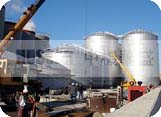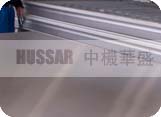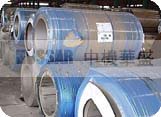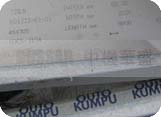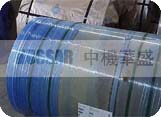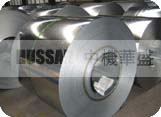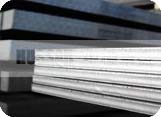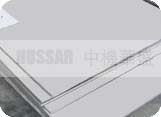| 316Lmod urea steel
(1.4435,18-14-3) UREA 316L Modified
grade has been specially developed for Urea plant applications. It is a 316L modified
stainless steel with extra-low silicon content and substantial higher molybdenum
contents.
The low carbon content, combined with a well balanced chemistry
(low silicon and nickel content close to 14%) makes the alloy fully austenitic,
free of intermetallic phase precipitations. The ferrite level is kept under 0.5%
in the solution annealing and water quenched conditions.
The alloy is designed
for improved corrosion resistance properties in Urea- carbonate environments.
Typical chemistry of filler materials to be used is as follow
Cr Ni
Mo Mn N
20% 16% 3% 6.5% 0.2%
EN 10088 / EN 10028 ......... X2 Cr Ni
Mo 18-14-3 - 1.4435
AFNOR................................Z3 CND 18.14.03
DIN...................................... W.Nr 1.4435
ASTM. ...............................
316L modified Alloy CLI UREA Modified
is a fully austenitic stainless steel which ferrite content is guaranteed less
than 0.5% after solution annealing heat treatment (1120-1180C (2048-2156F) /water
quenched). The carbon content is kept low while the steel making is optimised
in order to improve the cleanliness properties of the steel. The alloy is designed
for urea applications (low carbon and silicon contents).
Typical maximum corrosion
results required following different specifications after Huey tests (ASTM A262
C - five periods of 48 h.) are : maximum weight loss lower than 3,3 µm/48 h (ª
130 mg/dm² per 24 h.), with a maximum depth for microcracks of 200 µm in the long
direction and 70 µm in the transverse direction. Hot
forming
Hot forming should be carried out in a temperature range of 1200-950C
(2732- 1742F) after the piece has been uniformely heat treated. Final full annealing
tremperature is required to obtain the requested microstructure. It will be performed
at 1120-1180C (2048-2156F) followed by water quenching.
Cold forming
Due to its fully austenitic microstructure, the alloy can be cold formed without
any problem. The higher molybdenum content and cold hardening behaviour of the
steel explains that it may require more powerfull equipments than 304 stainless
steel.
Pickling
The UREA Modified grade must be used in the
as pickled and passivated conditions. Pickling treatment may be performed with
a nitro-hydrofluoric acid bath (10-20 % HN03 - 1.5-5% HF) at room temperature
(few hours) or 20 minutes approx. at 60C (140F). 10-20% H2SO4 - 1.5-5% HF pickling
bath may also be used.
Alloy UREA Modified can be welded with most of the
welding processes : TIG, Plasma, MIG welding, as well as SMAW, SAW or FCAW processes.
The alloy is sensitive to hot cracking phenomenon due to its fully austenitic
microstructure.
Weld should be performed in order to obtain extra-low ferrite
contents, no carbide or nitrides precipitations, low silicon contents as well
as no intermetallic phases precipitations.
Higher manganese content products
should be considered.
Use basic coated electrodes or fluxes in order
to decrease the hot cracking susceptibility. The heat input should be limited
to 1,5 kJ/mm and interpass temperature kept below 150C (302F).
Typical corrosion
test results in Huey test solution - ASTM A262-C are as follow :
maxi weight
loss 3.3 µm/48h - 0,54 g/m² h with selective attack lower than 200 µm.
| 
